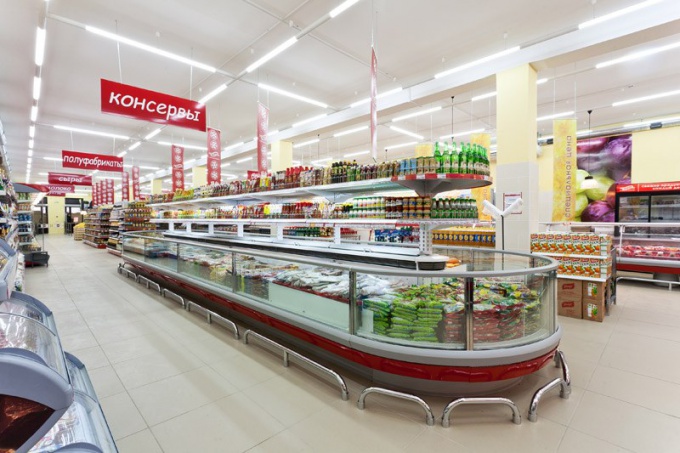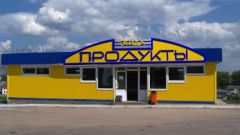Milestone range must be preceded by marketing research. Their task must be the identification of competitors and analysis of their range. Next, you need to perform potential consumers and determine their preferences. It should be noted that consumer behavior is necessary to analyze constantly and on the basis of changes to implement adjustments to the range.
Before the formation of the range to the grocery store, it is necessary to define key parameters. The product range is characterized by characteristics such as width, depth and height.
The first thing you need to do to develop the range to determine its width. It consists of a number of product groups in total. Features highlight product groups will depend on the format outlets and its specificity. It is clear that the width of the range in a hypermarket and a small shop at home is significantly different.
For example, in most small shops the format of the house allocate such product groups as dairy, bakery, confectionery, tea and coffee, prepared foods and frozen foods, cheeses and cured meats, alcoholic products, fruits and vegetables. And if the shop is highly specialized, commodity groups will be different. For example, in the meat shop it is possible to allocate such sections as raw meat, processed foods, ready meals, sausages, canned food, etc.
The width of the range should be determined on the basis of the analysis of the range of competitors. We must strive to find your own niche and offer a unique product, because to compete with large hypermarkets and supermarkets on prices may be problematic. So you can focus in the range of the sales of healthy food, organic products or delicatessen.
Once you decide the width of the range, you need to start filling the goods in each commodity group. The number of products in each commodity group is called depth. It is believed that it is optimal to include a range of products that will target different segment of buyers and enabling the production of economy-class products from the mid-price category and premium segment. The prevalence of particular products will depend upon positioning strategy store and its location. The cost of goods in product groups will determine the height of the range.
Important parameters characterizing the efficiency of the range is its mobility and relevance. They reflect the ability of the range to change to better meet the needs of customers and demand of their key SKUs. For example, in recent years a growing popularity among buyers of a healthy diet, so the shops are expanding the range of dairy products, vegetables and fruits.
On the other hand, the range of the grocery store should be stability, i.e. it should always be presented to goods which are in demand.
On the basis of ideas about the optimum depth and width of the store creates a product matrix. It includes the necessary list of goods sold, which meet the needs of customers. Minimum list of products sold product is low, which must constantly be present in the store.
In order to make a profit, the range should be formed in accordance with well-known rule of AVS. According to him, the group of products And are the most popular products. They account for 20% of the product range, but they produce up to 80% of the profits. They should be guaranteed to be present in the store at the right volume. Products from groups b and C required in the range, primarily for maintaining optimal width.
The width and depth of assortment
Before the formation of the range to the grocery store, it is necessary to define key parameters. The product range is characterized by characteristics such as width, depth and height.
The first thing you need to do to develop the range to determine its width. It consists of a number of product groups in total. Features highlight product groups will depend on the format outlets and its specificity. It is clear that the width of the range in a hypermarket and a small shop at home is significantly different.
For example, in most small shops the format of the house allocate such product groups as dairy, bakery, confectionery, tea and coffee, prepared foods and frozen foods, cheeses and cured meats, alcoholic products, fruits and vegetables. And if the shop is highly specialized, commodity groups will be different. For example, in the meat shop it is possible to allocate such sections as raw meat, processed foods, ready meals, sausages, canned food, etc.
The width of the range should be determined on the basis of the analysis of the range of competitors. We must strive to find your own niche and offer a unique product, because to compete with large hypermarkets and supermarkets on prices may be problematic. So you can focus in the range of the sales of healthy food, organic products or delicatessen.
Once you decide the width of the range, you need to start filling the goods in each commodity group. The number of products in each commodity group is called depth. It is believed that it is optimal to include a range of products that will target different segment of buyers and enabling the production of economy-class products from the mid-price category and premium segment. The prevalence of particular products will depend upon positioning strategy store and its location. The cost of goods in product groups will determine the height of the range.
Specifications effective range
Important parameters characterizing the efficiency of the range is its mobility and relevance. They reflect the ability of the range to change to better meet the needs of customers and demand of their key SKUs. For example, in recent years a growing popularity among buyers of a healthy diet, so the shops are expanding the range of dairy products, vegetables and fruits.
On the other hand, the range of the grocery store should be stability, i.e. it should always be presented to goods which are in demand.
On the basis of ideas about the optimum depth and width of the store creates a product matrix. It includes the necessary list of goods sold, which meet the needs of customers. Minimum list of products sold product is low, which must constantly be present in the store.
In order to make a profit, the range should be formed in accordance with well-known rule of AVS. According to him, the group of products And are the most popular products. They account for 20% of the product range, but they produce up to 80% of the profits. They should be guaranteed to be present in the store at the right volume. Products from groups b and C required in the range, primarily for maintaining optimal width.



